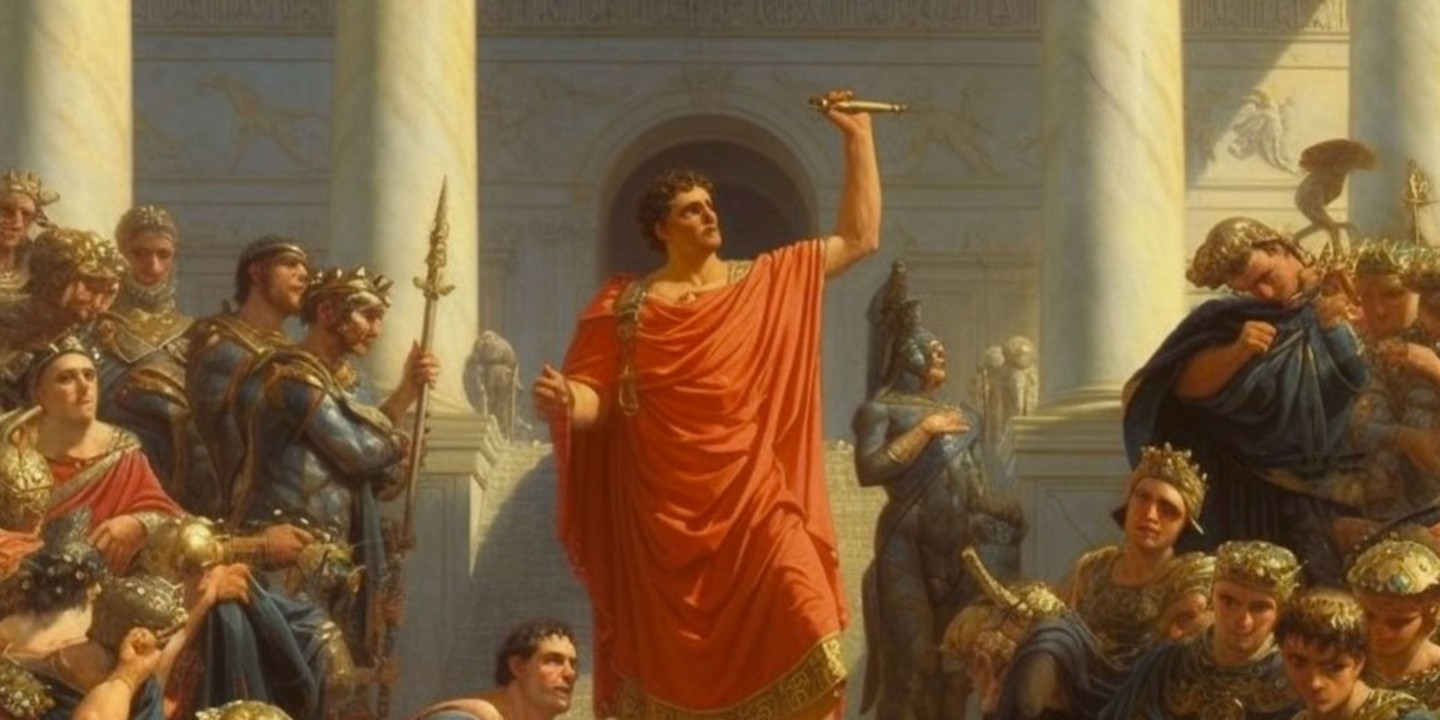Modern Life, Ancient Roots
Innovation didn’t start in the 20th century. Across eras and civilizations, people consistently crafted inventive solutions to life's problems that still echo in our daily habits to this day. Many objects you regularly rely on are just refined versions of ancient ingenuity. So let's take a look at which everyday things we all know and love go way, way back.
1. Sunglasses
Polar explorers used walrus ivory goggles to block the sun long before Ray-Bans existed. Also, in prehistoric times, Inuit people carved narrow slits into bone to reduce glare. The Chinese were using tinted quartz lenses as early as the 12th century, long before fashion and UV protection entered the picture.
2. Toothpaste
Before minty gels and fluoride blends, ancient Egyptians mixed myrrh, water, burnt eggshells, and pumice. This primitive paste appeared as early as 5000 BCE. The Romans later added flavor with charcoal and bark powder—abrasive, yes, but a strong start toward today’s dental hygiene industry.
 Charcoal Toothpaste Recipe by Natural Rooted Home
Charcoal Toothpaste Recipe by Natural Rooted Home
3. Vending Machines
Invented by Hero of Alexandria in the 1st century AD, the first vending machine dispensed holy water. The mechanism was operated by coins and used levers and weights to release a set amount. Hero’s invention predated modern snack dispensers by nearly two millennia and blended engineering with temple economics.
 Did Heron Invent the First Vending Machine Over 2000 Years Ago? by Wild Dream Films
Did Heron Invent the First Vending Machine Over 2000 Years Ago? by Wild Dream Films
4. Alarm Clocks
The earliest known German-made alarm clock was a 15th-century iron wall clock with a bronze bell. By the 19th century, Germany’s Black Forest region became a hub for clockmaking innovation. In 1880, Arthur Junghans developed the W10, a widely used alarm clock movement. German craftsmanship still dominates timekeeping today.
5. Flushing Toilets
Sir John Harington invented the first flushing toilet in 1590. Named the Ajax, it featured a cistern that released water to flush waste into a cesspool. The toilet was installed at Kelston Manor and later Richmond Palace and his design was detailed in a 1596 book but wasn’t widely adopted until centuries later.
 Hieronimo Custodis on Wikimedia
Hieronimo Custodis on Wikimedia
6. Contact Lenses
Leonardo da Vinci sketched the basic concept of altering vision with water-filled glass in 1508. His ideas led to the development of 19th-century glass lenses that covered the entire eye. Though soft lenses didn’t emerge until the 1970s, the foundation was laid nearly 500 years earlier.
 Leonardo da Vinci on Wikimedia
Leonardo da Vinci on Wikimedia
7. Door Locks
Wooden pin tumbler locks were used in Mesopotamia as early as 4000 BCE. These devices required a matching wooden key to lift internal pins—eerily similar to today’s pin tumbler locks. A 6,000-year-old security measure still hides behind nearly every modern doorknob and deadbolt system.
 The mechanism of an ancient Egyptian lock by Reddit Videos
The mechanism of an ancient Egyptian lock by Reddit Videos
8. Fast Food
Ancient Roman Thermopolis offered hot, ready-to-eat meals to busy citizens. These stone service counters were common across the empire, especially in Pompeii. With built-in storage pots for stews and grains, they show that fast dining wasn’t born in the 1950s. This was thriving before Christ!
9. Makeup
Egyptians in 4000 BCE used malachite and kohl to decorate their eyes and protect against infections. Men and women alike painted faces with intention—spiritual, cosmetic, and medicinal. Cleopatra’s cosmetic routine involved techniques that predate Sephora by over six millennia and included red ochre for lips and cheeks.
10. Inventory Record
A 4,000-year-old Babylonian clay tablet recorded oil, grain, and livestock quantities. Inscribed in cuneiform, it functioned like ancient bookkeeping, tracking goods much like modern inventory systems. This early example of record-keeping highlights how civilizations managed trade, supplies, and commerce long before ledgers, spreadsheets, and digital apps existed.
11. Handbags
The oldest known purse dates back over 5,000 years, found with Ötzi the Iceman. A decorative purse made from dog teeth was unearthed in a 4,500-year-old German burial site. Beyond fashion, ancient handbags often held tools or money, serving as functional items centuries before they became symbols of status.
12. Mirrors
Highly polished obsidian mirrors date back to 4000 BCE in modern-day Turkey. Later versions made from copper and bronze appeared in Mesopotamia and Egypt. However, glass mirrors didn’t emerge until the Roman Empire, meaning humans were reflecting on themselves for over 8,000 years—sometimes quite literally.
 Shop Obsidian Mirrors by satincrystals
Shop Obsidian Mirrors by satincrystals
13. Chewing Gum
Long before bubble gum brands existed, chewing was already a thing—one part medicine, one part mouth-filler, and one part prehistoric human habit. Neolithic people chewed birch tar for enjoyment and to relieve toothaches. Archaeologists have found 9,000-year-old lumps complete with preserved tooth imprints.
14. Board Games
Senet is one of the oldest known board games, originating in ancient Egypt around 2620 BCE. Played on a 30-square board, it involved strategy and chance, with pieces moving based on throwing sticks or knucklebones. Over time, Senet gained religious significance, symbolizing the journey to the afterlife.
15. Dental Fillings
The use of crude tools to treat decay reveals early humans were already solving oral pain with makeshift precision. A 6,500-year-old molar found in Italy shows signs of cavity scraping and filling with beeswax. This Stone Age dental work predates any written record of dentistry.
16. Umbrellas
Ancient Mesopotamians and Egyptians used parasols as early as 1000 BCE, not for rain but to block the sun and signify rank. These were crafted from palm leaves, feathers, or silk. China later waterproofed them with waxed paper, creating the earliest rain umbrellas over 2,000 years ago.
17. Socks
Romans wrapped their feet in strips of fabric. However, the oldest known knit socks, complete with split toes for sandals, come from Egypt around 300 CE. Made from wool, these colorful foot coverings show that chilly feet have been a concern for nearly two millennia.
18. Refrigeration
Persian engineers built yakhchals—conical, mud-brick ice houses—around 400 BCE. These structures stored ice collected in winter or created through desert cooling techniques. They could preserve food for months, centuries before electric refrigerators emerged, and some yakhchals still stand today, testifying to ancient engineering.
19. Hair Dye
As early as 1500 BCE, the Egyptians used henna and other natural extracts to color their hair. Greeks and Romans followed with plant- and mineral-based formulas. Red and gold hues dominated, and recipes from ancient texts prove that gray coverage has long been a cosmetic priority.
 How to Mix and Apply Henna To Natural Hair by The London Curls
How to Mix and Apply Henna To Natural Hair by The London Curls
20. Musical Instruments
Bone flutes found in Germany’s Hohle Fels cave date back over 40,000 years. Made from vulture wing bones and mammoth ivory, they prove music predates agriculture. These instruments, with drilled finger holes, suggest that even early Homo sapiens had a sense of rhythm, melody, and a deep need for sound.
 The Swedish History Museum, Stockholm from Sweden on Wikimedia
The Swedish History Museum, Stockholm from Sweden on Wikimedia
KEEP ON READING

The Woman Without A Name
Mary Doefour was the woman without a name. In 1978,…
By Robbie Woods Dec 3, 2024
The 10 Worst Generals In History
Bad Generals come in all shapes and sizes. Some commanders…
By Robbie Woods Dec 3, 2024
10 Historical Villains Who Weren't THAT Bad
Sometimes people end up getting a worse reputation than they…
By Robbie Woods Dec 3, 2024
One Tiny Mistake Exposed A $3 Billion Heist
While still in college, Jimmy Zhong discovered a loophole that…
By Robbie Woods Dec 3, 2024
The Double Life And Disturbing Death of Bob Crane
Bob Crane was the star of Hogan's Heroes from 1965-1971.…
By Robbie Woods Dec 3, 2024
The Most Surprising Facts About North Korea
North Korea may be the most secretive state in the…
By Robbie Woods Dec 3, 2024













